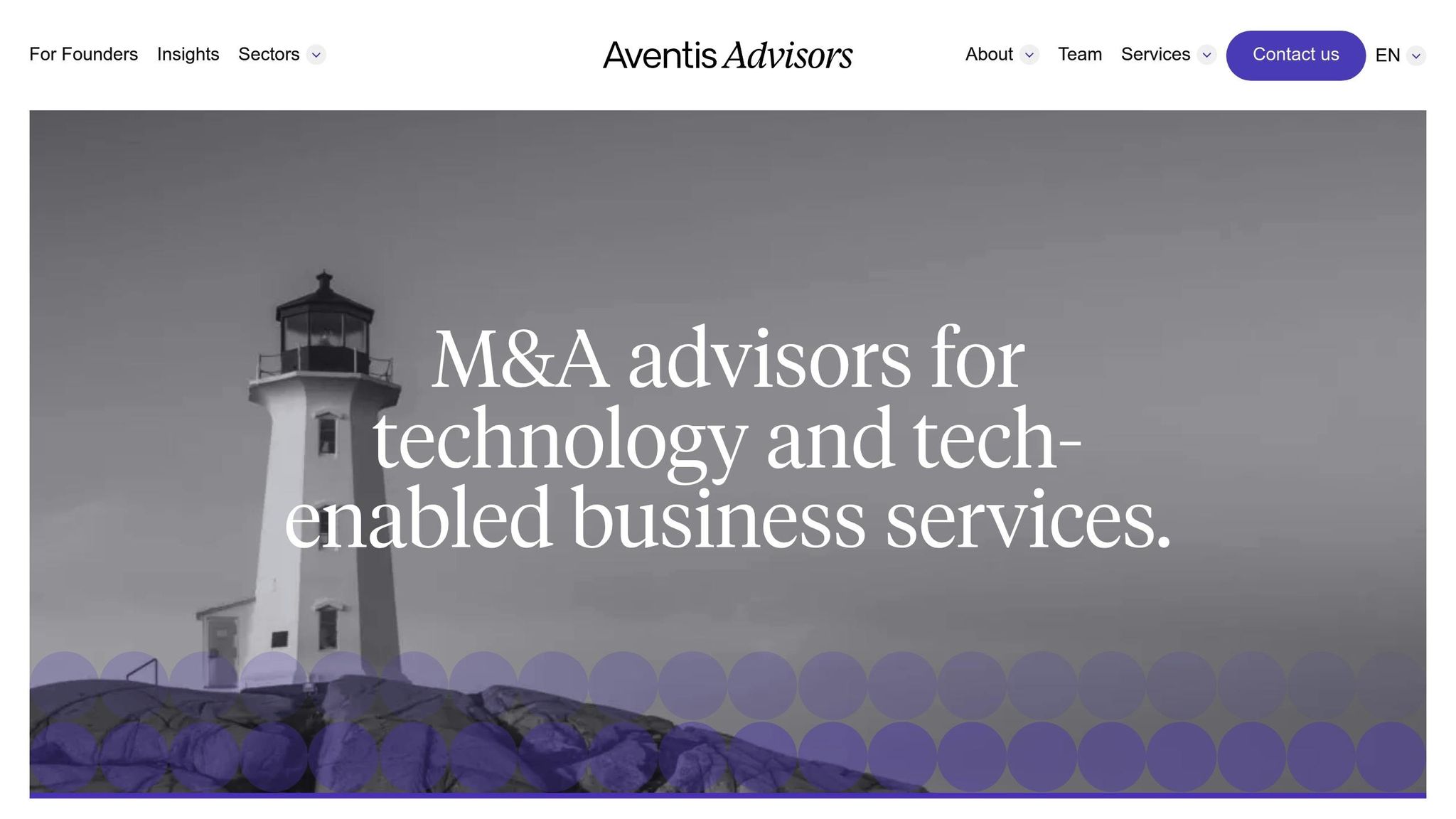SaaS valuations in 2025 are all about balance. Growth alone doesn’t cut it anymore - investors now prioritize companies that show both growth and profitability. Metrics like Net Revenue Retention (NRR), Lifetime Value to Customer Acquisition Cost (LTV/CAC), and the Rule of 40 are shaping how companies are assessed. Here’s what you need to know:
- Profitability = Growth: Investors are giving equal weight to profitability as they do to growth. SaaS companies with strong unit economics and steady cash flow are outperforming their high-growth but unprofitable peers.
- Key Metrics to Watch:
- EV/Revenue and ARR Multiples: These are the foundation of SaaS valuations, with strong performers commanding higher multiples.
- Rule of 40: A combined growth rate and profit margin of 40% or more is a key benchmark for premium valuations.
- Retention Metrics (LTV/CAC & NRR): Companies with high NRR (above 120%) and a LTV/CAC ratio of 3x or more are seen as safer bets.
- Public vs. Private Valuations: Public SaaS companies are seeing a wide range of multiples, while private companies, especially those leveraging AI in niche markets, are commanding premiums.
- AI’s Role: AI is driving higher valuations, but only when it delivers measurable results like improved retention or cost savings.
What to Do Next: Focus on retention, align pricing with customer value, and balance growth with profitability. Investors are rewarding efficiency and stability, so doubling down on these areas can position your SaaS business for success in today’s market.
SaaS Valuations in H1 2025 Webinar - Aventis Advisors

How SaaS Valuation Multiples Work
SaaS valuation multiples provide a way to compare companies by looking beyond just raw revenue. They use ratios that link a company's market value to specific financial metrics, helping investors decide how much they’re willing to pay for a business.
SaaS businesses stand out due to their recurring revenue streams and growth potential. Subscription-based models create steady, predictable revenue, making them attractive to investors. For example, a dollar of monthly recurring revenue (MRR) is typically valued about twice as much as revenue from one-time lifetime plans [1]. Let’s break down the key valuation multiples and how they shape investor expectations.
EV/Revenue and ARR Multiples
Enterprise Value to Revenue (EV/Revenue) and Annual Recurring Revenue (ARR) multiples are the bedrock of SaaS valuations. EV/Revenue is calculated by dividing a company’s total enterprise value by its annual revenue, offering a straightforward way to compare businesses. ARR multiples, on the other hand, focus solely on recurring revenue, highlighting its stability and predictability. For instance, if a company has an enterprise value of $100 million and generates $20 million in ARR, its ARR multiple would be 5x.
Market trends heavily influence these multiples. Recently, there’s been a widening gap in valuation multiples, with top-performing companies commanding higher ARR multiples [3]. To achieve premium multiples, companies need to demonstrate strong performance across key metrics [3]. This brings us to the intersection of growth and profitability, often measured by the Rule of 40.
Rule of 40 and Profitability Metrics
The Rule of 40 is widely used to evaluate the health of SaaS companies, balancing growth and profitability. According to this metric, a company’s combined revenue growth rate and profit margin should total at least 40% [1][6]. For example, a company growing at 25% with a 20% profit margin would achieve a Rule of 40 score of 45%.
However, recent data paints a challenging picture. In Q2 2025, the median Rule of 40 score for public SaaS companies was just 23%, down from about 30% in 2015 [5]. Even more striking, only 13% of 58 publicly traded SaaS companies surpassed the Rule of 40 benchmark [5]. Each 10-point improvement in this metric was linked to about a 1.5x increase in EV/Revenue multiples in Q2 2025, compared to 0.8x in Q1 [5]. This shows how faster growth or better profitability can significantly impact valuations. Healthy SaaS gross margins typically range between 70% and 85% [2], making strong unit economics essential. In today’s market, investors prioritize operational efficiency over unchecked growth.
Retention Metrics: LTV/CAC and NRR-Adjusted ARR
Retention metrics like Lifetime Value to Customer Acquisition Cost (LTV/CAC) and Net Revenue Retention (NRR) are critical for SaaS valuations. LTV/CAC shows how effectively a company turns its marketing spend into long-term customer value. A ratio of 3x or higher is ideal, indicating that the company earns significantly more per customer than it spends to acquire them [1][7].
NRR, meanwhile, has become one of the most important metrics for SaaS businesses. It tracks how revenue from existing customers changes over time, factoring in upsells, cross-sells, downgrades, and churn [2][6]. A high NRR (above 100%) signals that a company can grow even without acquiring new customers, reflecting strong product value and customer satisfaction [2][4][6]. Leading SaaS companies often achieve NRR above 120% [2], meaning they generate at least 20% annual revenue growth from their existing customer base. This reduces risk for investors by showing that growth isn’t solely dependent on expensive customer acquisition.
For SaaS companies with $1M–$5M in ARR, top performers see median growth rates of 75%. Those with $5M–$20M ARR achieve 47% [2]. These numbers highlight how retention and expansion revenue drive overall growth. Businesses can improve these metrics by investing in customer success programs, streamlining onboarding, and creating strategies for account expansion. The goal is to build a model where existing customers become more valuable over time, reducing reliance on acquiring new ones.
2025 SaaS Valuation Data and Market Trends
By 2025, the SaaS valuation landscape reflects a more mature market where investors have become increasingly selective. Simply being a SaaS company is no longer enough to command high valuations; instead, the focus has shifted toward established players with proven performance[3]. Let’s take a closer look at how valuation approaches differ between public and private markets.
Public vs. Private SaaS Valuation Multiples
In the public market, SaaS companies exhibit a broad spectrum of valuation multiples. Top-tier performers significantly outpace their lower-performing counterparts, achieving much higher valuations.
Private SaaS valuations, on the other hand, show even greater variability. Companies leveraging AI with strong customer retention and clear market strategies often secure premium multiples. For example, vertical platforms in sectors like fintech, logistics, legal tech, and healthcare AI - particularly those aligned with FDA requirements or reimbursement systems - see valuations ranging from 5x to over 8x revenue[8].
This gap highlights the differing priorities of public and private investors. Private investors tend to reward companies with specialized AI capabilities and dominance in niche markets. In contrast, public market investors focus on profitability and consistent cash flow. These differences provide valuable insights for SaaS founders and executives aiming to optimize their strategies for higher valuations.
Another high-value segment includes automation and industrial AI companies, with valuations typically ranging from 3–7x revenue[8]. These multiples often depend on factors like the breadth of deployment, demonstrated customer ROI, and the length of contracts. Companies that can clearly show cost savings and workflow improvements tend to achieve the higher end of these multiples. This shift in focus underscores a broader market trend toward stability and profitability.
Focus on Profitability and Steady Growth
The SaaS market in 2025 has moved away from prioritizing rapid growth at any cost. Investors now favor companies that demonstrate operational efficiency, sustainable unit economics, and a clear path to profitability. This marks a stark departure from the "growth-at-all-costs" mindset that dominated earlier years.
AI-focused startups remain one of the few bright spots for attracting early-stage investment on favorable terms[3]. However, even within this space, investors demand tangible results. Companies must show measurable revenue impact, customer success stories, and clear ROI rather than relying on conceptual roadmaps to secure funding.
The market is also shifting from broad AI platforms to modular, API-first solutions designed to deliver measurable ROI[8]. This mirrors the earlier transition from general-purpose SaaS tools to industry-specific solutions, which tend to command higher valuation multiples. Notably, Goldman Sachs projects that the IaaS market will reach $580 billion by 2030, driven largely by the growing demand for AI platforms[8].
While top-performing SaaS companies with high ARR multiples continue to thrive[3], average performers face tighter valuations and a more challenging funding environment. Companies without clear differentiation or strong unit economics are increasingly at risk of being left behind in this competitive market.
Ownership of core AI technology has also become a key factor, with investors placing a premium on integrated solutions. This trend highlights the importance of operational efficiency and innovation in core technologies. For SaaS companies, aligning their business models with these evolving market expectations is crucial to navigating the current landscape effectively.
sbb-itb-9cd970b
What Drives SaaS Valuations
The factors that influence SaaS valuations are essential for guiding the decisions of founders and executives. While market conditions and investor sentiment certainly play a role, several core metrics consistently shape how investors assess the value of SaaS businesses. These metrics help refine how market performance is understood and acted upon.
Revenue Growth and Retention Rates
Revenue growth is a cornerstone of SaaS valuations. Companies that demonstrate steady, predictable growth often earn higher valuation multiples.
A critical metric here is Net Revenue Retention (NRR). Businesses that can grow revenue from their existing customer base - without relying solely on acquiring new customers - are typically rewarded with premium valuations. Why? Because it shows customers are finding increasing value in the product over time, leading to greater reliance.
Predictable growth in Annual Recurring Revenue (ARR), whether from new customers or upselling existing ones, is another key factor. It signals stability and reduces risk for investors.
On the flip side, customer churn has a direct impact on valuations. Lower churn rates indicate a strong product-market fit and more sustainable revenue streams. This reduces the constant pressure to replace lost customers, which can be costly and time-consuming.
Profit Margins and Unit Economics
Profitability is becoming increasingly important in SaaS valuations, and strong unit economics are at the heart of this shift. Metrics like LTV/CAC ratio (Lifetime Value to Customer Acquisition Cost) and gross margins are particularly telling. High gross margins, for example, highlight scalability and pricing power, which can lead to better valuations. On the other hand, companies with lower margins may face discounted valuations unless they can clearly outline a path to improvement.
The Rule of 40 remains a widely used benchmark. If a company’s combined revenue growth rate and profitability percentage meet or exceed this standard, it’s often rewarded with higher valuation multiples. Positive free cash flow and efficient unit economics further strengthen a company’s appeal to investors.
Market Segments and Business Models
Beyond growth and profitability, the market segment and business model a SaaS company operates in also play a significant role in its valuation. For instance, vertical SaaS solutions - those tailored to specific industries - often command higher multiples than horizontal platforms. Their specialized focus and higher switching costs make them more attractive to investors.
The integration of AI technologies can also influence valuations, but only when it delivers measurable benefits like improved retention, operational efficiency, or revenue growth. AI features that serve as mere marketing buzzwords, without clear ROI, generally fail to add meaningful value to a company’s valuation.
Another important factor is contract structure. SaaS companies with longer-term contracts and high renewal rates enjoy greater revenue predictability, which investors favor. In contrast, businesses relying on short-term or month-to-month agreements may struggle to secure higher valuations.
Lastly, market size and competitive positioning remain vital. Companies operating in large, dynamic markets with strong competitive advantages tend to achieve higher multiples, especially if they can demonstrate clear leadership or a path toward it. Pricing models also matter - usage-based pricing that aligns with customer success often enhances valuations by linking revenue growth directly to customer value. This alignment provides a solid foundation for strategic improvements that can maximize a company’s worth.
Practical Steps for SaaS Founders and Executives
Understanding valuation benchmarks is only useful if you can put that knowledge into action. In today’s market, companies that combine operational discipline with steady growth are the ones catching investors' attention. Here’s how you can position your SaaS business to meet investor expectations in 2025.
Improving Recurring Revenue and Retention
Boosting recurring revenue and retention is key to increasing your company’s valuation. Here’s how to make meaningful progress in these areas:
Strengthen existing customer relationships instead of focusing solely on acquiring new ones. Companies with high net revenue retention ratios often enjoy better valuations because they demonstrate that customers continue to see increasing value over time.
Dig into customer usage data to spot underutilized accounts. Use these insights to run targeted campaigns that encourage feature adoption or upgrades.
Set up automated alerts to flag early signs of churn. For instance, if a customer’s usage drops below normal levels or engagement metrics decline, your team can step in with personalized support or additional training to re-engage them.
Reconsider your pricing strategy to better align with the value customers receive. Usage-based pricing models, which grow as customers succeed, not only improve retention but also lead to healthier unit economics. When customers see a direct link between what they pay and the value they get, the relationship naturally grows stronger.
Invest in scalable tools to automate processes like onboarding, monitoring at-risk accounts, and providing self-service resources. These investments help customers achieve their goals more efficiently while keeping operational costs in check.
Balancing Growth with Profitability
Striking the right balance between aggressive growth and sustainable profitability is another critical factor.
Keep the Rule of 40 in mind and prioritize growth initiatives that also improve unit economics. Focus on customer segments that offer higher lifetime value, faster sales cycles, or lower support costs.
Take a comprehensive view of your acquisition channels by factoring in all associated costs - marketing, sales, onboarding, and support. Then, shift resources toward the channels delivering better long-term returns.
Base your pricing on demonstrated value rather than simply matching competitors. If you can show customers a clear return on investment, you’ll often have more flexibility to adjust pricing, which supports stronger margins. Use case studies to highlight how your product delivers measurable results, such as cost savings or revenue growth.
Offer annual contracts with upfront payments to improve cash flow and reduce churn. Providing discounts for multi-year commitments can also be worthwhile if it leads to better retention and steadier revenue streams.
Streamline your operations by automating repetitive tasks like customer onboarding, billing, and basic support. This approach allows you to maintain high service standards while reducing manual effort, ultimately boosting efficiency.
Using AI and Automation for Growth
Today’s market rewards companies that integrate AI in meaningful ways while penalizing those that use it as a gimmick. Here’s how to make AI work for your business:
Develop proprietary AI capabilities that provide real competitive advantages. Avoid adding AI features just for marketing appeal; instead, focus on solving specific problems or improving key metrics.
For example, if churn is an issue, use AI tools to identify at-risk accounts and recommend targeted interventions. If sales efficiency is a priority, implement AI-driven solutions to help your team prioritize leads and craft personalized outreach.
Create a clear AI strategy that outlines its measurable business impact. Investors value companies with a balanced view of AI - acknowledging both its opportunities and risks. While some areas like content generation or basic customer support may face disruption, B2B systems of record tend to be more stable.
Be selective with AI partnerships. Building your own AI capabilities often leads to higher valuations than relying on off-the-shelf solutions. Focus on areas where AI can give you a lasting competitive edge.
Keep an eye on how AI is reshaping your competitive landscape. If AI-powered alternatives threaten your position, look for ways to deliver value that’s hard to replicate. This could mean offering deeper industry expertise, leveraging data network effects, or creating more integrated workflows.
Ensure your AI investments lead to measurable results - like better retention, higher conversion rates, or improved unit economics. By embedding AI thoughtfully into your business, you not only drive growth but also enhance your overall market position and valuation.
Conclusion: Using SaaS Benchmarks for Long-Term Success
As outlined earlier, maintaining steady recurring revenue, ensuring high customer retention, and streamlining operations are key to building lasting value in the SaaS industry.
The valuation trends for 2025 reveal a shift in investor priorities. Instead of chasing unchecked growth, there’s a stronger focus on companies that balance growth with financial discipline and a loyal customer base. This balanced strategy is becoming essential for thriving in an increasingly competitive landscape.
Current benchmarks highlight the need to evaluate both revenue growth and profitability. Companies that excel at retaining and expanding customer relationships while keeping operations efficient are showcasing the kind of data-driven strategies that attract investors. For SaaS founders and executives, the path forward involves prioritizing recurring revenue, improving customer success, and leveraging smart technology and automation. By aligning with these benchmarks, SaaS leaders can confidently navigate market challenges and build a foundation for long-term success.
FAQs
What is the Rule of 40, and how can SaaS companies achieve it to balance growth and profitability?
The Rule of 40 is a crucial metric for SaaS companies, blending revenue growth rate and profit margin into a single benchmark. The goal? To ensure the combined total of these two metrics is greater than 40%. Hitting this mark indicates a company is striking a solid balance between growth and profitability.
To get there, businesses should prioritize improving efficiency, keeping costs under control, and focusing on sustainable growth strategies. Companies that consistently surpass the Rule of 40 tend to catch the eye of investors, as they showcase both the ability to scale and maintain financial discipline.
How does AI impact SaaS valuations, and what can companies do to ensure it drives measurable value?
AI is playing a major role in increasing SaaS company valuations by improving efficiency, enabling smarter decision-making through data insights, and opening up new revenue streams. Investors often see AI adoption as a marker of forward-thinking and growth potential, which can significantly raise a company's market appeal.
To make AI truly impactful, businesses should prioritize solutions that align with their main goals. This means identifying specific areas where AI can make a difference - like enhancing customer experiences, simplifying internal workflows, or making better use of resources. Measuring success through clear metrics, such as cost reductions, revenue growth, or stronger customer retention, is essential to showcase how AI directly benefits the business.
Why are metrics like Net Revenue Retention (NRR) and Lifetime Value to Customer Acquisition Cost (LTV/CAC) so important for SaaS valuations?
Metrics like Net Revenue Retention (NRR) and Lifetime Value to Customer Acquisition Cost (LTV/CAC) play a crucial role in evaluating SaaS companies. Why? Because they reveal how effectively a business retains customers and generates revenue over time. These numbers are key indicators of long-term financial health and the ability to scale.
NRR shows how much revenue you’re holding onto - and even growing - from your existing customer base. On the other hand, LTV/CAC measures how efficiently you’re acquiring customers compared to the value they bring over their lifetime. Together, these metrics paint a clear picture of your company’s stability, growth potential, and profitability. SaaS companies that perform well in these areas often stand out to investors and stakeholders, making them highly competitive in the market.
Related Blog Posts
- SaaS Exit Multiples 2025 How Founders Are Securing 7x ARR Deals
- How to Command Premium Valuations in SaaS: Lessons from AI-First Companies
- Why the “New Normal” in SaaS Valuation Means Only the Best Get 8-10× Multiples
- The SaaS Valuation Gap: Why Typical Firms Stall at 4-6× While AI-Enabled Ones Hit 10×+



